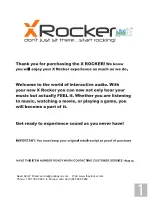
Using Passwords
Using Passwords
The password-setting feature helps to prevent your computer from
being used by others. Once you set a password, a prompt appears
on the screen each time you turn on the computer. You must enter
your password at the prompt. You cannot use the computer unless
you type the correct password.
You can set the following passwords on your computer:
Power-on password
Set the power-on password to protect your computer from use by
another person. It provides the following security features:
– You need to type the power-on password at startup.
Therefore, unauthorized users cannot use your computer.
– You need to type the power-on password when resuming
from suspend mode. Therefore, unauthorized users cannot
use your computer.
Hard-disk-drive password
The hard-disk-drive password provides an extra measure of
security. Even if you set a power-on password, another user can
remove the hard disk drive in your computer and put it in a
different computer to access your data. If you set a
hard-disk-drive password, however, another person cannot
access the data on your hard disk without knowing the password.
A hard-disk-drive password provides the following security
features:
– You need to type the hard-disk-drive password at startup.
– If the hard disk drive is moved to another computer, the
hard-disk-drive password must be typed at startup.
Therefore, unauthorized users cannot access your hard disk
even if the drive is removed from the computer.
– If you have not set a supervisor password, the
hard-disk-drive password is required when the computer
resumes from suspend mode.
– If you put a check mark in the Prompt for password when
computer goes off standby check box in the “Power
Management Properties” window, you are required to use the
Windows 98 logon password to resume from suspend mode.
72
IBM ThinkPad 380Z User's Reference
Title: C79EPMST CreationDate: 06/22/98 12:00:09















































